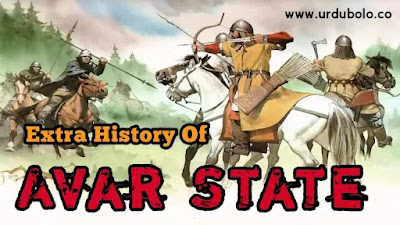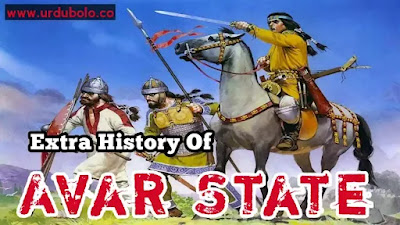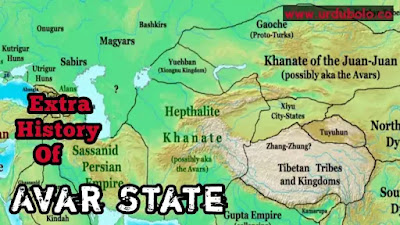The Avar State
- Date of Establishment: 565
- Date of Collapse: 835
- Founder: Bayan Kağan
- Capital: Segedin
- Language: Avarca
- Head of State: Kağan
Avars established a mighty state in Central Europe between the Frankish Kingdom and the Byzantine Empire, with the support of Turkish masses such as the old Huns, Sabar ruins and Ogur (Bulgarians), by dominating various Germanic and especially crowded Slavic tribes for 250 years. It became an empire that shaped European politics.
In 558, the Avars wanted to establish friendship with an envoy they sent to the Byzantines and a land to settle in. The Byzantines, on the other hand, were fed up with the constant incursions of some of their tribes into the Balkans and made an agreement, hoping for help from the Avars in this regard, and they gave the Avars to settle the lands in return for making war against their enemies in the Caucasus. The Avars fought and were victorious with many tribes and Sabirs. The Avars, who descended to the mouth of the Danube in 560, settled in Dobruca with the permission of Byzantium.
Thus, they began to oppress the Slavs. Russian sources write that Avars took Slavic women whenever they wanted, and they drove them in their chariots instead of horses. The Avars raided the Byzantine border over the Slavs in 562. In these raids, the Slavs had to retreat towards the Balkans. They demanded the lands they deserved from the Byzantines for their assistance to the Byzantines in the Caucasus war. The Avars, who did not like a part of the land proposed by the Byzantines, accepted Byzantium as an enemy. Defeating the rebellious Oaths and the Slovenes, the Avars defeated Siegebert, King of the Franks, in a battle on the banks of the Albis river.
As a result of these wars and raids, Avars established the Avar Empire in 565 on the lands of the European Hun Empire a century ago. They declared their capital as the city of Segedin, which was the capital of Atilla. The founder and first ruler of the Avar Empire was Bayan Khagan. He ruled for 37 years between 565-602. During the time of Bayan Khagan, Avars lived their heyday. The Lombards, who were from the Germanic tribe living west of the Danube, sought help from the Avars in their war against the Gepids. The Avars agreed to help the Lombards to give one tenth of their livestock, on the condition that if the war was won, they would receive half the spoils and all of the Gepid lands. The war against the Gepids, who could not get help from the Byzantines, was very bloody and the domination of the Gepids living in Hungary was ended. The Avars thus conquered most of Hungary. Later, they captured Panonia, the country left by the Lombards when they migrated to Italy, and eventually all of Hungary. The Avars became a great empire.
The first attack on the Avars, which attracted the attention of all of Europe, came from the Göktürks in 569 and some regions were lost. In 570, the Frankish King Siegebert attacked the Avars and inflicted a great defeat. When the Avars wanted the city of Sirmium (Mitrovica) from the Byzantines, a war broke out between the two countries and the Byzantine army under the command of the Byzantine commander Tiberius I attacked the Avars, but the Avar army, which had a regular organization, defeated the Byzantines under Bayan Kagan. At the end of this war, the Byzantines paid the Avars 80,000 gold coins, and the Avars gave up wanting the city of Sirmium.
Then, in 579, the relations deteriorated again because of this city, and the Avars besieged Belgrade and Sirmium, the border castles of Byzantium, after a siege that lasted for 3 years. The castles were completely captured in 582. In the face of this situation, the Byzantines sacrificed the castles and had to make peace, and paid the 80,000 gold tax, which they had not paid for the last 3 years, as 240,000 gold in total. When the Avars began to dwindle in numbers at the end of their wars, they brought some tribes from the east. Mrs. Kagan entered the territory of the Franks to take revenge in 582 and defeated the Franks and captured King Siegebert. He was later released in exchange for loot. The Avars asked the Byzantines to increase the annual tax of 80,000 gold to 100,000, and when this was not accepted, the city of Belgrade was besieged again and the war was won despite heavy losses.
He took refuge in Byzantium when a spiritual chief's affair with a woman in the Hakan's harem was discovered in the Avar palace. Moreover, he said that Mrs. Kagan wanted the Slavs to attack the Byzantine lands. Thereupon, the Avars attacked Byzantium when the Byzantines kept the Avar envoy, who came to collect taxes, under arrest for 6 months. In 586, the Avars destroyed many Byzantine cities. Thereupon, a new Byzantine army attacked and defeated the Avars in the Aemus Mountains. In this war, Avars suffered great losses and prisoners. After a while, the Avars, who recovered themselves, suddenly attacked the Byzantine army this time and rescued their captives. Another Byzantine army attacked and defeated the Avars in the city of Mea.
While the 3 Byzantine armies participating in the war were looking for each other, they were suddenly attacked by the Avars in the dark of night, The Avars, who gained morale with this victory, advanced into Thrace and even besieged the Edirne castle, but no results could be obtained. During this siege, the Avars, who were hit by the Byzantines, made a 5-year friendship agreement with the Byzantines. In 581, the Byzantines sought help from the Avars to avenge the Slavs' past years, and an Avar army of 60,000 attacked and defeated the Slavs, leaving their country and fleeing to the forests and caves, the Slavs could not resist the Avars plundering their country. A few years after the 5-year Byzantine-Avar friendship agreement ended, the Avars again attacked Byzantine territory and besieged Thessaloniki, but without success. In 592, they organized raids again and came to Çorlu. Mutual raids continued, and in 597 the Avars attacked and defeated the Franks again.
At the end of the war with the Byzantines in 600, the Avars lost the left banks of the Danube. In 601, Mrs. Kagan sent her 4 sons against the Byzantines and she fought herself, but the Byzantines were victorious in this war and Bayan Kagan's 4 sons died in battle. Mrs. Kagan, who came to the aid of her sons, was only able to escape from the superiority of the Byzantines and escaped to the Tisa river region. After this battle, the Avars withdrew to Dakia. When the Emperor Bayan Kagan died in 602, her fifth son became the ruler. The name of the fifth son, who became the ruler after Mrs. Kagan, is unknown.
Peace was made again with the Byzantines in 602 and lived in peace until 610. In 610, the Avars besieged the city of Friaul, ruled by the Lombard Prince Ghisulf, and killed the Prince. The prince's wife, Romhilda, retired to Forum Juli castle with her 8 children. The Avars, who besieged this castle, wanted to retreat when the siege did not yield any results for a long time, but Romhilda sent news that she could surrender the castle on the condition of marrying the Avar Khan, whom she saw from the castle and fell in love with. After the Avars captured the castle in this way, the Avar Khan delivered this princess to 12 Avar guards, saying that anyone who betrayed his homeland would not benefit us. Having plundered this castle, the Avars withdrew towards Panonia. Meanwhile, when Romhilda's children escaped, the Avar Khan had Romhilda killed.
Heraclius I, who became emperor in 610, stated through the ambassadors that he wanted to establish friendship with the Avars in 616. The Byzantine Emperor said he wanted to visit the Avar khan, and then decided to meet between the two rulers Selymbria-Hereklea. The Avars planned to attack the Byzantines and take the emperor captive at this meeting, but the Byzantine emperor learned this at the last moment and managed to escape, while the Avars attacked and captured the incoming Byzantines, but could not find the Emperor. The Avar Khan, who could not avenge his father and brothers, besieged Istanbul, but they could not succeed. This siege is the first siege of Istanbul. On the way back to their homeland, the Avars looted many churches they saw.
Avars and Sassanids agreed to try the 2nd siege of Istanbul. When the Sassanids crossed all Anatolia and came to the Anatolian side of the Bosphorus, they crossed the Balkans and Thrace with the support of the Slavs and Bulgarian Turks in the Avars and came to Istanbul. The siege, which was launched jointly with the Sassanids in 626, lasted for 5 days. Istanbul was defended very well, despite the very powerful weapons of the Avars and the incredible rain of arrows. The siege was inconclusive as the Avar ships could not defeat the Byzantine ships. Because the Byzantines had escaped the siege, they declared the Saturday of the 5th week of Lent a feast and gave thanks to the Virgin Mary in the hymn of Akathistos, which would be sung in churches for years to come. After this unsuccessful siege, the Avars lost power.
At the end of the death of the Avar khan in 630, the Byzantines provoked the tribes living under the rule of the Avars and led to an uprising. The Avars, who lost some of their lands in the uprisings, were also weakened economically. After a long silence, the Avars entered Bavaria in 736 and were thoroughly worn out in this war that lasted for 20 years, and even had to leave their lands in Austria to the Germans. In 788, the Avars marched on Italy and sacked the city of Friaul, later defeated by the Franks. Tudun Kagan, the last (7th) ruler, ruled for 12 years between 791-803. At this time, the Franks attacked the Avars and burned down the Avar fortresses. The Avar Khan, on the other hand, sent envoys to the Franks and demanded that he and his people would become Christians and that these attacks should end. The Franks, who did not accept this offer, advanced into the interior of the Avar country. When the Avars lost their capital in 796, the Avars abandoned Shamanism and accepted Christianity. Tudun Kagan visited the Frankish king and became a Christian with a ceremony and took the name Todor. When the hostility of the Frankish king to the Turks continued, Tudun Kagan converted to Shamanism again and went to Bavaria and defeated and killed the Frankish king's brother-in-law, Count Gerold.
At the end of the wars, the Avars were completely dispersed in 803. The fragmented Avar tribes dispersed to Eastern Hungary and the Balkans in the face of the persecution of the Franks. The Christianized Avar people gradually eroded and disappeared. It is believed that today there are descendants of the Avars in the country of Hungary. When the Avars lost their capital in 796, the Avars abandoned Shamanism and accepted Christianity. Tudun Kagan visited the Frankish king and became a Christian with a ceremony and took the name Todor. When the hostility of the Frankish king to the Turks continued, Tudun Kagan converted to Shamanism again and went to Bavaria and defeated and killed the Frankish king's brother-in-law, Count Gerold. At the end of the wars, the Avars were completely dispersed in 803.
The fragmented Avar tribes dispersed to Eastern Hungary and the Balkans in the face of the persecution of the Franks. The Christianized Avar people gradually eroded and disappeared. It is believed that today there are descendants of the Avars in the country of Hungary. When the Avars lost their capital in 796, the Avars abandoned Shamanism and accepted Christianity. Tudun Kagan visited the Frankish king and became a Christian with a ceremony and took the name Todor. When the hostility of the Frankish king to the Turks continued, Tudun Kagan converted to Shamanism again and went to Bavaria and defeated and killed the Frankish king's brother-in-law, Count Gerold. At the end of the wars, the Avars were completely dispersed in 803.
The fragmented Avar tribes dispersed to Eastern Hungary and the Balkans in the face of the persecution of the Franks. The Christianized Avar people gradually eroded and disappeared. It is believed that today there are descendants of the Avars in the country of Hungary. When the hostility of the Frankish king to the Turks continued, Tudun Kagan converted to Shamanism again and went to Bavaria and defeated and killed the Frankish king's brother-in-law, Count Gerold. At the end of the wars, the Avars were completely dispersed in 803. The fragmented Avar tribes dispersed to Eastern Hungary and the Balkans in the face of the persecution of the Franks. The Christianized Avar people gradually eroded and disappeared. It is believed that today there are descendants of the Avars in the country of Hungary. When the hostility of the Frankish king to the Turks continued, Tudun Kagan converted to Shamanism again and went to Bavaria and defeated and killed the Frankish king's brother-in-law, Count Gerold. At the end of the wars, the Avars were completely dispersed in 803. The fragmented Avar tribes dispersed to Eastern Hungary and the Balkans in the face of the persecution of the Franks. The Christianized Avar people gradually eroded and disappeared. It is believed that today there are descendants of the Avars in the country of Hungary.
General Information :
The ruler of the state, the Hakan, was called the Kagan. Avar and Bulgarian Turks cavalry in the army; Slavs, Germans and other tribes entered the war as infantry. They led a nomadic life. Some Avars settled down and engaged in trade. At the end of the gold taken from the Byzantines, two-thirds of the world's gold stocks were in the hands of the Avars. The Avars influenced other tribes in the area with their braided hair hanging down their shoulders. Avars were members of Shamanism religion as in other Turkish states. Later, as a result of the pressure of the Franks, Christianity spread. Food was placed in the Avar tombs so that they would not starve in the afterlife. In the researches, it was determined that the Avars were interested in art. Avars' arrows, bows, swords, circular stirrups, cast tools, harnesses with pictures on them, belt ornaments, They are known to make forged metal plates. Avar art also influenced Slavic, Germanic and Byzantine art. After the Huns, the Slavs, who accepted the sovereignty of the Avars, even learned agriculture from the Avars.
Rulers of the Avar Empire :
1) Mrs. Kagan (565 – 602)
2) Unknown
3) Tudun I (791 – 803)
4) Zodan (803 – 805)
5) Thedorus (805 – ?)
6) Abraham (? – ?)
7) Tudun II ( ? – 835)













No comments:
Post a Comment
Please Avoid To Enter Spam Links in the Comment Box.